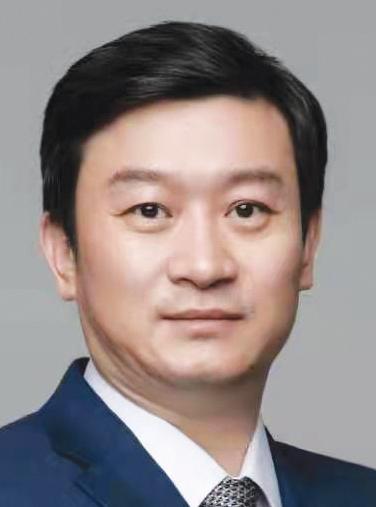For a long time, China’s medical service system has been mainly government-run, with public hospitals having a distinct advantage in terms of talent, technology and equipment. The public health care system emphasizes public welfare and consists of tertiary hospitals, secondary hospitals and primary care institutions, with tertiary hospitals performing high-level medical and research tasks, secondary hospitals performing routine treatments and surgeries, and primary care institutions the remaining bulk of day-to-day patient health care interactions. And while private health care only caters for around 15% of the total volume of patients in the world’s most populous country, its popularity is on the rise. In this interview, Wang Rui draws on his experience as the chairman of the China Association of Medicine and Health Culture’s investment branch and his 25 years in the health care industry, discussing the shifting landscape of China’s health care industry, the growing involvement of technology and the increasing influence of private business.
Q. What are the main problems with China’s health care system? What are the top issues it faces?
A. China’s health care system currently suffers from an unbalanced distribution of medical resources and inadequate development on the supply side of the service. Firstly, there is an uneven geographic allocation of high-quality hospitals: 31 of the top 50 ranked hospitals in 2019 were either in Beijing, Shanghai or Guangzhou. Secondly, there is an imbalance in the allocation of hospitals between urban and rural areas with 935 million people in rural areas being served by just over 16,000 hospitals, compared to around 18,000 hospitals in urban areas for just 384 million people.
Third, there is also a lopsided distribution of the number of doctors between the east and west of the country and China has fewer practicing physicians per 1,000 people compared to the global average—2.3 and 3.5, respectively. Finally, there are too few available beds across the country. China has around 6.3 beds per 1,000 people, compared to 13.7 beds in neighboring Japan and 10.3 beds in South Korea. Clearly, there is still some way for China to go.
Q. How does the global economic slowdown affect China’s health care industry? How can the industry maintain its momentum?
A. As the world’s economic growth stagnates and moves toward contraction, the downward pressure on more economically sensitive industries is high, while the less economically sensitive industries, such as health care, show unique advantages. Data shows that in recent years total global health care spending had an average annual growth rate of about 6.6%, much higher than the economic growth index. China has also proposed to accelerate the implementation of a new “dual circulation” policy, with domestic development being the main focus and domestic and international dual circulation developing each other.
For the health industry, the focus on domestic development mainly refers to the need for health management, medical services, rehabilitation and elderly care, health insurance and other service products to be in line with national needs, public sentiment and to prioritize domestic demand. Doing so should result in the steady development of the Chinese health care sector. When we talk about the domestic and international circulations developing each other, it mainly refers to biomedicine, high-end medical devices and other import and export products that can be improved through open innovation and a mutually beneficial industrial development model. Chinese businesses need to join hands with global partners because through technological innovation, capacity innovation, business model innovation and with a core competitiveness, we are in a better position to fight for a spot at the forefront of medical developments. Proper implementation of the “dual circulation” policy within the health care sector will spur China’s advancement and provide an opportunity to help the rest of the world.
Q. How competitive is the market in China’s health care sector? What is the size of the market?
A. In recent years, given consumer demand and national policy support, China’s medical, recreational and health care industry has been gradually standardized. Insurance companies, real estate companies, listed pharmaceutical companies and traditional conglomerates, among others, have entered the market for different purposes, but all have seen large profits, leading to a further influx of players. It is predicted that the country’s health care industry will quadruple in size between 2015 and 2030, rising from RMB 3.8 trillion to a massive RMB 16 trillion. This growth will be fueled by expansion of traditional medical services such as pharmaceuticals and biotechnology, but also by a wide range of emerging industries. The commercial medical insurance industry alone is expected to reach RMB 1.5 trillion in size by the end of the 14th Five-Year Plan.
Q. Technological innovation has become an important force leading the transformation of the global health care industry. Can you give us examples of areas and fields in which China has taken the lead?
A. China is at the leading edge of the commercialization of 5G to boost the development of various industries, and 5G has important applications in the health care industry. For example, in remote surgery, 5G can establish an exclusive communication channel between upper- and lower-level hospitals, guaranteeing the stability, real-time accuracy and safety of remote surgery. This allows experts at top hospitals to control the surgical processes and patient condition at any time and from anywhere which means that surgery for patients at lower-level hospitals across geographical areas can be provided by highly skilled surgeons at a reasonable price.
There is also blockchain technology, which is an effective tool for the health care industry to solve many pain points and can provide fertile ground in the process of building medical service systems, pharmaceutical production systems, insurance payment systems and government decision-making systems.
Q. How is health care in China being digitalized? What are the roles of the state and private companies in this?
A. The digital development of health care in China can be divided into three main stages: First, the creation and proliferation of hospital information systems, clinical information systems, electronic medical records and other information systems. Second comes regional integration, whereby medical information systems represented by the Regional Health Information Platform are linked to provide more intelligent and collaborative services for hospital groups, allied hospitals, medical bodies, etc., while the health information platforms are linked to smart city information systems. The final stage is intelligent digitalization. Big data, cloud computing, artificial intelligence and other emerging information technologies are becoming deeply integrated into the health care system.
The state has a leading role in this, and its impact on medical digitalization comes in three main areas. First, policy guidance. China has issued a number of policies to encourage and support the development of medical digitalization, which have resulted in the rapid digitalization of China’s health care system. Then there is the state’s role in incubation and cultivation of new research and technologies. In medical digitalization, the state has encouraged different types of scientific research topics and allocated a lot of research funding to provide the basis for related research and development output. Third, it is responsible for industry promotion. The state promotes the development of health care digitalization and related industries, and promotes the mutual integration of the industrial chain, supply chain and value chain.
Private enterprises also play an irreplaceable role in the digitalization process of health care in China. On one hand, private enterprises have inherent advantages in talent, incentive mechanisms, innovation strengths and market connections, which can accelerate the implementation of new digital technology. While also using efficient and diversified financing methods, they can quickly absorb social capital and create the momentum to spur the development of the industry. On the other hand, the government also encourages private enterprises to participate in ramping up health care digitalization and fully mobilizing the enthusiasm of private enterprises, especially the highly innovative internet enterprises, to promote industrial upgrading.
Q. What is the current state of development of primary care in China and the problems it faces?
A. There are several reasons behind the need for development of primary care in China, one of which is its importance. Primary medical institutions have always been the mainstay of the people’s access to medical care and by the end of 2019, there were 954,390 such institutions, accounting for 94.72% of the total number of health care institutions nationwide.
There are also personnel issues, with only around 2.291 million health technicians in primary medical institutions who, in contrast with secondary and tertiary hospitals, have to serve the whole Chinese population. Even without a lack of staff, the workload for those working in primary care institutions is massive. The average number of consultations per day for staff at primary medical institutions is around 12.9, and in urban community health service centers that can rise to 16.5, which is significantly higher than the national average of 7.1 consultations per day for physicians.
A gap between the vocational skills training and post-employment talent training of primary care providers, compared with in large medical institutions, resulting in a lower level of service capacity in primary care institutions also presents a problem. And finally, wages in primary care are lower. In 2017, the per capita annual income of public hospital employees was, on average, RMB 110,000, while the per capita annual income of primary health care institution personnel was less than RMB 100,000.
At present, people’s trust in primary care institutions is generally low, and the contradiction between the need to provide public welfare via primary health care services and the safety assurances demanded by the public for daily medical care is becoming increasingly pronounced. In the future, big data, cloud computing, artificial intelligence and other cutting-edge technologies will become the core driving force of a new round of industrial change, artificial intelligence-enabled primary care may be a practical measure to make up for the shortcomings of current primary care services and strengthen the efficiency of public health services.
Q. What is the role of insurance companies in the Chinese health care system compared to other countries?
A. The “Healthy China 2030” plan outline proposes the “improvement of a multi-level medical security system with basic medical insurance at its core, complemented by other forms of supplementary insurance and commercial health insurance.” Therefore, insurance companies are an important complementary force in China’s medical system. However, compared with other countries, China’s commercial insurance industry started late. Whether it is major medical insurance for urban and rural residents, which is a supplement and extension of basic medical insurance, or the various types of commercial health insurance developed independently, there is still a lot of room for improvement for commercial insurance companies to supplement medical insurance in terms of the actual sharing effect of medical costs. In the future, the connection between commercial health insurance and basic medical insurance will be more obvious, and the role of commercial insurance’s supplementary positioning will be more prominent.
Q. What is the role of private companies in China’s health care system? How does this compare to other countries?
A. In the United States, up to 85% of all medical institutions are private, and the majority of highly-ranked hospitals are private, a phenomenon completely different from China where top hospitals are government-run. In recent years, under the guidance of national policies, private medical institutions have developed rapidly, and from 2010 to 2019 the number of private hospitals increased from 6,461 to 22,081, going from 31.78% of all hospitals to 65% and exceeding the number of public hospitals. By 2019, the total treatment volume of private hospitals accounted for 15.29% of the overall volume of all hospitals and it has become an important supplement to public hospital services.
However, private medical institutions in China are struggling to develop in the large, comprehensive and asset-reliant service areas, but are developing very strongly in the small-scale and easy-to-replicate areas such as dental clinics or optometric centers.
Q. How do you see the Chinese health care system changing in the next 5-10 years?
A. In the next 5-10 years, China’s medical system will improve through continuous reshaping. The health industry is changing from a service used only when ill, to a full lifecycle health management service, a model which covers the extensive, social and holistic nature of human health. From the viewpoint of service institutions, it is no longer the simple route of registration, consultation, payment, examination, report, prescription and drug collection, but now a requirement for a holistic approach.
From the perspective of individual services, the focus will be on the whole human lifecycle and the integration of everything from health management to medical services, to rehabilitation care and elderly health care will become a necessity. Improving the success rate of medical treatment so as to achieve a reduction in all kinds of disease and an increase in quick and effective treatment, as well as providing better ongoing health care after treatment is also a priority.
Different groups of people have different service needs, so in the future, we will need to build a model that includes all aspects of preventing illnesses, managing chronic illnesses, consulting for minor illnesses, treating serious illnesses, and going through rehabilitation, and this will become the mainstream direction for the industry’s development.
Interview by Liu Yingying
Wang Rui is the chairman of the China Association of Medicine and Health Culture’s Investment Branch. He also works as an investment expert for the China Insurance Asset Management Industry Association, having previous work experience at primary and tertiary hospitals in China




















